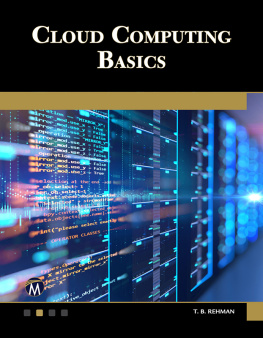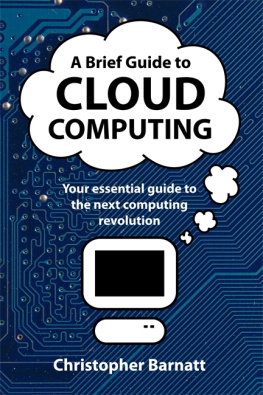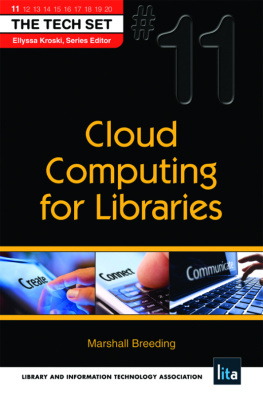
Contents
Landmarks
Page Navigation
Cloud Computing for Science and Engineering
Scientific and Engineering Computation
William Gropp and Ewing Lusk, editors; Janusz Kowalik, founding editor
A complete list of books published in the Scientific and Engineering Computation
series appears at the back of this book.
2017 Massachusetts Institute of Technology
All rights reserved. No part of this book may be reproduced in any form by any electronic or mechanical means (including photocopying, recording, or information storage and retrieval) without permission in writing from the publisher.
This book was set in  by the authors. Printed and bound in the United States of America.
by the authors. Printed and bound in the United States of America.
Library of Congress Cataloging-in-Publication Data is available.
ISBN: 978-0-262-03724-2
10 9 8 7 6 5 4 3 2 1
Cloud4SciEng.org
This book is accompanied by the above website. This site provides a variety of supplementary material, including exercises, lecture slides, corrections of mistakes, and other resources that should be useful to both readers and instructors.
This book has benefited from the contributions of many people. We first thank Rusty Lusk for persuading us to write the book and Marie Lufkin Lee, our editor at MIT Press, for her support as we developed the manuscript.
A special thanks to Rich Wolski and Stig Telfer who, at our invitation, wrote the chapters on Building your own Cloud with Eucalyptus and OpenStack, respectively. We would not have of the book without their contributions.
We thank Ben Blaiszik, Kyle Chard, Ryan Chard, Ricardo Barros Loureno, Jim Pruyne, Tyler Eagle Eye Skluzacek, Roselyne Tchoua, and Logan Ward for their careful review and detailed critiques of many chapters, and Gail Pieper for her masterly copyediting help, which as in many past projects, turned our often turgid and sometimes erroneous text into prose.
We also thank Pete Beckman and Charlie Catlett for providing information on the Array of Things and Manish Parashar for information about the Ocean Observatory Initiative, both featured in . Tyler Skluzacek provided a unique perspective on Resnet-152.
We are grateful to Ian Goodfellow, Yoshua Bengio, and Aaron Courville, authors of the magnificent Deep Learning[143], for providing their LAT E X macros and introducing us to pdf2htmlEX, which we used to make the web version of the book. Thanks also to Lu Wang for writing pdf2htmlEX.
We owe a deep vote of thanks to the U.S. Department of Energy, National Science Foundation, National Institutes of Health, and National Institute of Standards and Technology for the support they have provided to our research over many years: support that has allowed us to gain the knowledge of cloud and technical computing that we have worked to distill in this book. Not just this book but modern science, and indeed the cloud that we describe in the chapters that follow, would not exist without the vision and persistence that have allowed these agencies to support research excellence for many decades. We are also grateful to Amazon and Microsoft for generous grants of cloud time.
Argonne National Laboratory and the University of Chicago provided the first author with a uniquely collegial and stimulating environment in which to undertake this work, as they have for many years.
Finally, we acknowledge that the book is only possible because of the work of the many talented and dedicated architects and developers who produced the tremendous array of software that makes cloud computing so rewarding and fun.
Civilization advances by extending the number of important operations which we can perform without thinking about them.
Alfred North Whitehead, Introduction to Mathematics
This book is about cloud computing and how you, the reader, may apply it to advantage in science and engineering. It is a practical guide, with many hands-on examples, all accessible online, of how to use cloud computing to address specific problems that arise in technical computing, and actionable advice on how and when to apply cloud computing in your daily work.
The term cloud computing was first used in 1996; today, it appears on billboards in airports. You may wonder whether it is a technology, movement, repackaging of old ideas, or marketing slogan. It is all of these things and more. Above all, though, it is a transformation in the state of affairs that we ignore at our peril, in science as in other parts of our life. As Tim Bray wrote in 2015: Yeah, computing is moving to a utility model. Yeah, you can do all sorts of things in a public cloud that are too hard or too expensive in your own computer room. Yeah, the public-cloud operators are going to provide way better uptime, security, and distribution than you can build yourself.














